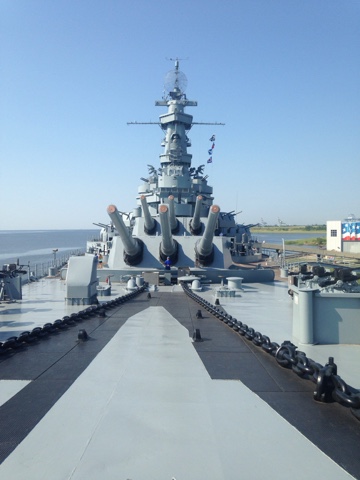These are just three of the more than 250 photos I took of the USS Texas when I was in Houston awhile back. What can I say? This ship is incredible! You can explore the main deck, a few levels of the super structure, and even go several levels below deck. One of the main gun turrets is even open, but it is not for everyone. It's very tight and cramped, and a bit difficult to get into. You can even go way below decks and into parts of the engine room. Being deep in the belly of the beast gave me new appreciation for the types of men who manned these ships.
The day I was there, temperatures were in the mid '80's, and humidity was low. The Sun was shining, and by mid-morning, even with fans, A/C and increased ventilation, and even with no boilers fired, it was incredibly hot. I couldn't truly imagine the constant heat inside this thing. It also is unbelievable to think about being below decks during battle, or having to put out fires or repair battle damage.
For those unfamiliar, the Texas was christened in 1914, and at the time it entered service, it was the most powerful weapons platform on the face of the Earth. It is the oldest US battleship in the US and has the dubious distinction of being the only remaining battleship to have served in both World Wars. It was reconditioned and overhauled after the Great War, and it served with distinction in both the Atlantic and Pacific during WWII. It participated in the Normandy invasion, and also the Iwo Jima and Okinawa campaigns.
The USS Texas is showing its age. There is constant repair and upgrade being done to it by volunteers, but there is also a lot more to do. Volunteer organizations also are raising funds to give it a permanent dry berth, as the hundred+ year old battleship has numerous leaks that require constant pumping. A dry berth will be the only way to keep it preserved and open for future generations.
You can learn more about the ship here;
http://tpwd.texas.gov/state-parks/battleship-texas
You can also learn about volunteer opportunities here;
http://www.firsttexasvolunteers.org
If you are ever in the Houston area, the Texas is definitely a thing to check out. Its proximity to the San Jacinto monument and battlefield provides a good opportunity for a fun day of education.












